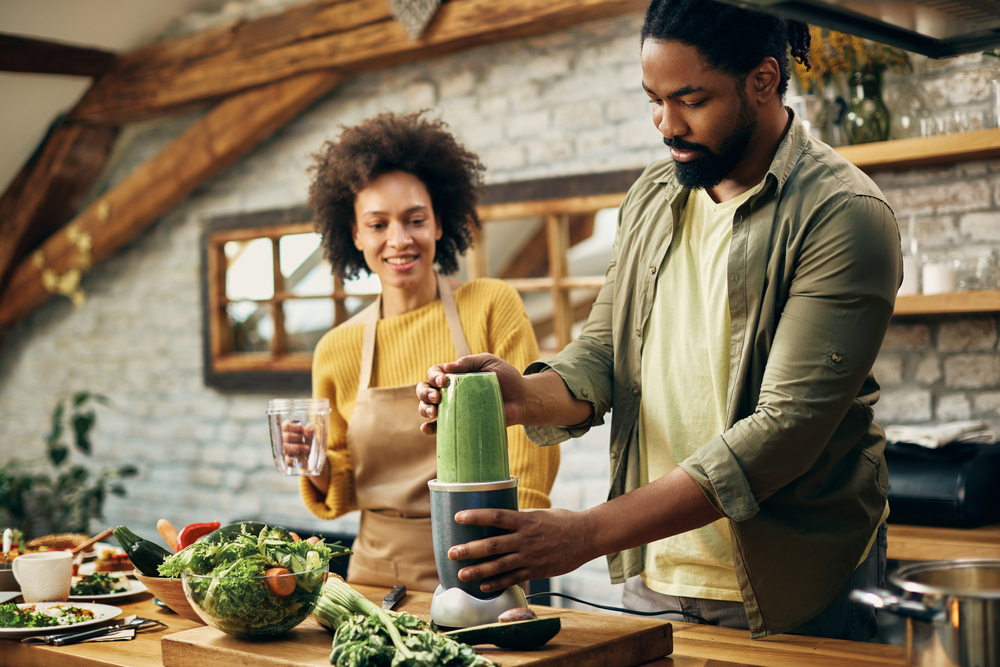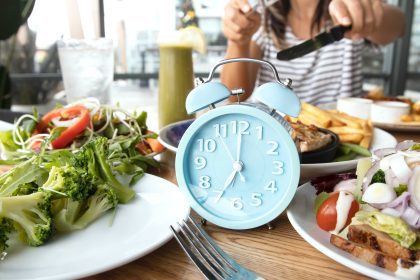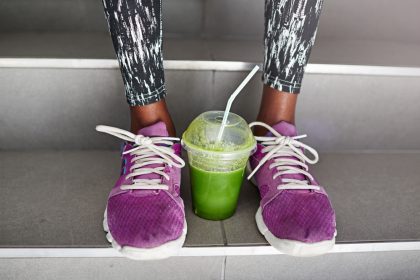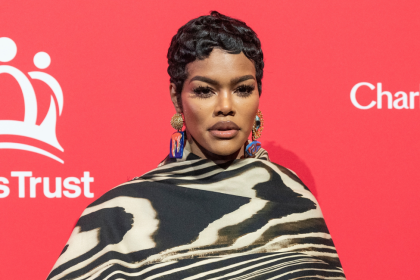You’re doing everything right, or so you think. You’ve swapped your bacon and eggs for a nutrient-packed smoothie. You’ve traded drive-thru coffee for blended fruits and veggies. Your blender has become your most-used kitchen appliance, and you feel virtuous with every sip of that vibrant concoction. There’s just one problem. The number on your scale is creeping up, not down. Your “healthy” smoothie habit might actually be packing on pounds, and the reasons why reveal some surprising truths about how our bodies process food.
The calorie bomb in your blender
That innocent-looking smoothie can pack a serious caloric punch without you ever realizing it. When you toss banana, mango, yogurt, honey, and a splash of juice into your blender, you’re creating what can easily become a 600-700 calorie meal replacement. For comparison, that’s about the same as a burger from a fast food restaurant.
The issue isn’t just the total calories, though. It’s how easy it is to consume them without noticing. When you eat whole fruits and vegetables, you’re naturally limited by the volume of food and the time it takes to chew and digest. A large apple might have 100 calories and take several minutes to eat. But when you blend that apple with three other fruits, you can consume the equivalent of several pieces of fruit in just a few gulps.
Many smoothie enthusiasts also add calorie-dense “boosters” like nut butters, protein powders, coconut oil, or sweeteners like honey or agave. While these ingredients can have health benefits, they dramatically increase the calorie content of your drink. Just one tablespoon of almond butter adds about 100 calories, and many people casually toss in two or three without a second thought.
Store-bought and smoothie shop options are often even worse. Commercial smoothies frequently contain added sugars, fruit juices, frozen yogurt, or sorbet that can push the calorie count well over 800 calories. That “green” smoothie at your local juice bar might contain more calories than a full meal, despite its healthy appearance.
The blood sugar rollercoaster
Even when made with nothing but whole fruits, smoothies can trigger unwelcome blood sugar spikes that may contribute to weight gain. When you blend fruits, you’re breaking down the cellular structure that would normally slow digestion. The natural sugars become more readily available to your bloodstream, potentially causing a rapid rise in blood glucose.
This quick spike is typically followed by an insulin response and subsequent blood sugar drop that can leave you feeling hungry again much sooner than if you’d eaten the same fruits whole. The result? You might find yourself reaching for a snack an hour after finishing your smoothie, effectively adding those calories on top of an already calorie-dense drink.
The liquid form of smoothies compounds this issue. Studies show that our bodies don’t register liquid calories the same way they register solid food. When you drink your calories instead of eating them, your brain doesn’t send the same fullness signals, potentially leading to overconsumption later in the day.
For people with insulin resistance or prediabetes, this blood sugar effect can be even more pronounced, making smoothies a particularly poor choice for those who need to carefully regulate their blood glucose levels.
The missing chew factor
One of the most overlooked aspects of smoothie consumption is the complete elimination of chewing. This might seem trivial, but the act of chewing plays several important roles in digestion and satiety that smoothies bypass entirely.
Chewing triggers the release of enzymes in your saliva that begin breaking down food. This first stage of digestion isn’t just biochemical, it’s also mechanical. The grinding action of your teeth breaks food into smaller pieces with more surface area, allowing digestive enzymes to work more efficiently.
Perhaps even more importantly, chewing sends powerful signals to your brain that you’re consuming food, which helps activate satiety hormones. The more you chew, the more time these signals have to register, helping you feel satisfied with an appropriate amount of food.
When you drink a smoothie, you’re skipping these crucial steps. Your body doesn’t have to work to extract nutrients, which means you don’t get the same feelings of fullness. You might consume hundreds of calories in a matter of minutes without your brain ever registering that you’ve eaten a substantial amount of food.
This disconnect between calorie intake and satiety signals is a perfect recipe for weight gain. Your body counts those smoothie calories even if your brain doesn’t register them properly, leaving you with the calorie impact of a large meal but potentially the hunger levels of a light snack.
The fiber disruption
“But what about all that fiber?” smoothie defenders often ask. It’s true that fruit and vegetable smoothies contain fiber, but blending changes how that fiber functions in your body.
When you consume whole fruits and vegetables, their natural fiber creates a gel-like matrix in your digestive tract that slows the absorption of sugars and helps you feel full. This intact fiber structure is key to the health benefits of whole produce.
Blending partially breaks down this fiber matrix. While the fiber molecules are still present, their physical structure is altered, potentially reducing their effectiveness at slowing digestion and managing blood sugar levels. Some nutrition scientists refer to this as “pre-digestion,” where your blender does work that your body would normally handle more gradually.
The more powerful your blender, the more thoroughly it disrupts the natural fiber structure. Those expensive high-speed blenders that create perfectly smooth drinks are particularly effective at breaking down cell walls and releasing sugars from their fiber matrix, potentially exacerbating the blood sugar issues.
That’s not to say smoothie fiber has no benefits. It still provides some advantages over fiber-free drinks like fruit juice. But the benefits aren’t equivalent to eating the same ingredients in their whole, unblended form.
The mindless consumption trap
Another factor in smoothie-related weight gain is how we consume them. Smoothies are typically drunk quickly, often on the go or while multitasking. This mindless consumption bypasses many of the psychological aspects of eating that contribute to satisfaction and fullness.
When you sit down to a proper meal, you can see all the food on your plate. Your brain registers this visual cue as part of assessing how much you’re eating. You take time to cut, spear, or pick up each bite. You chew methodically. All of these sensory experiences contribute to your perception of having eaten a complete meal.
With smoothies, most of these cues are absent. You don’t see the individual components once they’re blended. You don’t engage in the ritual behaviors of eating. You simply drink, often while doing something else entirely. This disconnected form of consumption fails to trigger the same psychological satisfaction as a proper meal, potentially leading to additional eating later.
Many people also view smoothies as “just a drink” rather than a full caloric event. This perception can lead to using smoothies as additions to regular meals rather than replacements, effectively adding several hundred calories to daily intake.
Smarter smoothie strategies
Does this mean you should toss your blender and swear off smoothies forever? Not necessarily. For some people, smoothies can be a convenient way to increase fruit and vegetable consumption or manage specific nutritional needs. The key is being strategic about your approach.
Watch your portions carefully. Start with a base of leafy greens and non-starchy vegetables rather than multiple fruits. Limit high-sugar fruits to small amounts, perhaps half a banana or a quarter cup of berries. Measure calorie-dense add-ins like nut butters with measuring spoons rather than estimating.
Consider adding protein and healthy fats to reduce the glycemic impact. Plain Greek yogurt, a small amount of nut butter, or a scoop of unsweetened protein powder can help balance the natural sugars from fruit and create a more satiating drink that won’t spike your blood sugar.
Make your smoothie more meal-like by serving it in a bowl and eating it with a spoon. Top it with ingredients that require chewing, like a small handful of granola, chopped nuts, or fresh berries. This slows consumption and adds back some of the satiety cues that drinking bypasses.
Be honest about your smoothie’s role in your diet. If it’s a meal replacement, treat it as such and ensure it’s nutritionally complete. If it’s a snack, adjust the size and calorie content accordingly. Don’t fall into the trap of having a full smoothie as a beverage alongside a regular meal.
The bottom line
Smoothies aren’t inherently good or bad for weight management. Like most foods, their impact depends on their composition, how they fit into your overall diet, and your individual metabolic response. The problem arises when we assume that anything containing fruits and vegetables must automatically support weight loss, regardless of quantity or preparation method.
For many people, especially those struggling with weight management, insulin sensitivity, or appetite regulation, consuming whole foods in their natural form may be a better strategy than drinking them blended. The extra effort required to chew and digest intact foods serves an important purpose in our complex digestive and metabolic systems.
If smoothies are a regular part of your routine and your weight is creeping up, consider examining your blends more critically. That daily smoothie habit might be delivering more calories and less satiety than you realize, one virtuous-feeling sip at a time.

















